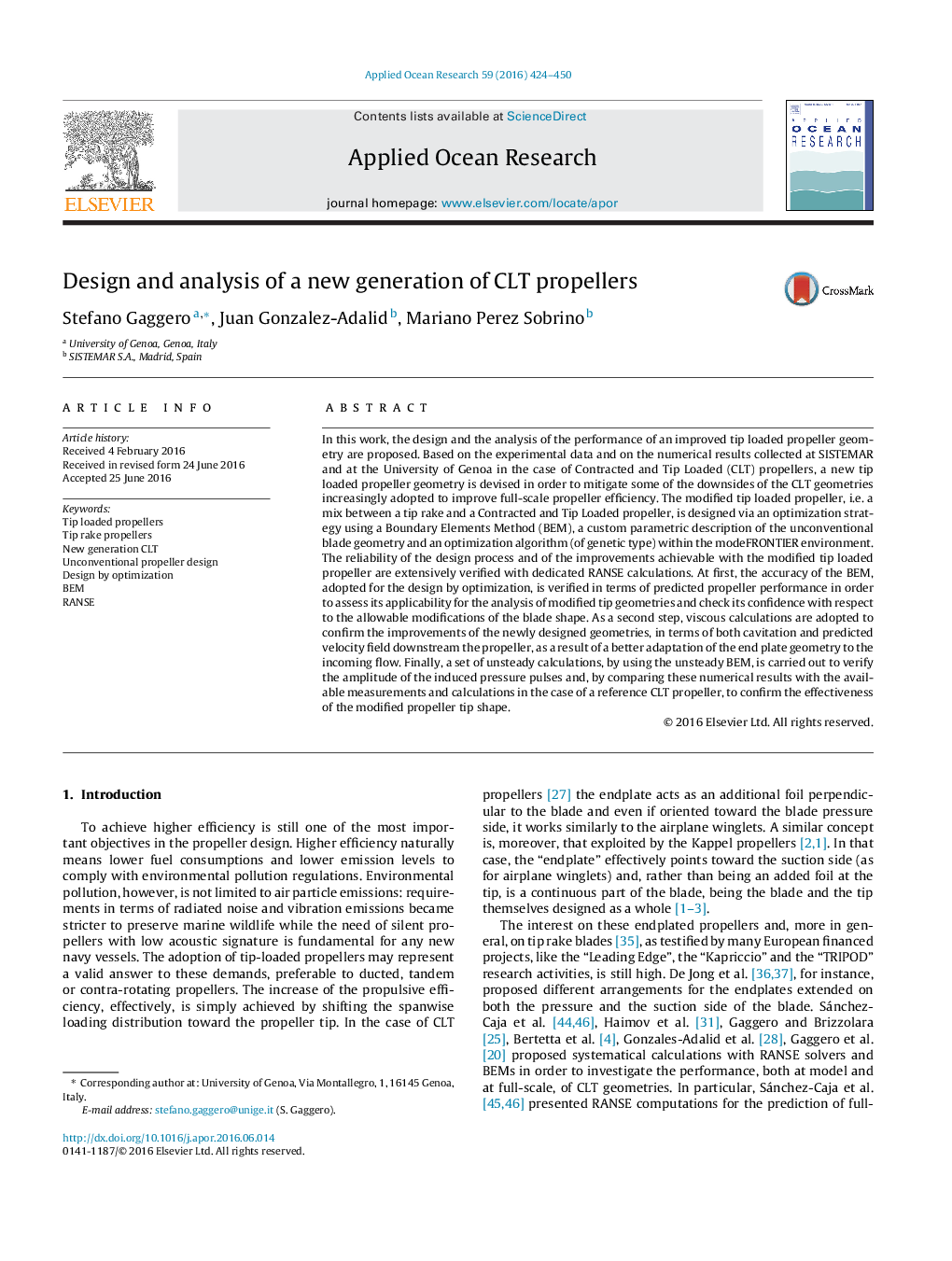| کد مقاله | کد نشریه | سال انتشار | مقاله انگلیسی | نسخه تمام متن |
|---|---|---|---|---|
| 1719792 | 1520244 | 2016 | 27 صفحه PDF | دانلود رایگان |

• The new generation of Contracted and Tip Loaded propellers represent a valid alternative to conventional propulsors.
• Cavitation and tip vortexes have to be controlled already in the design phase, exploiting the potentialities of the endplate design.
• Traditional design methods may fail with such unconventional geometries and requirements.
• Coupled panel code/optimization algorithms represent a feasible design alternative.
• Results on the new generation of CLT propellers are validated by means of RANSE calculations.
In this work, the design and the analysis of the performance of an improved tip loaded propeller geometry are proposed. Based on the experimental data and on the numerical results collected at SISTEMAR and at the University of Genoa in the case of Contracted and Tip Loaded (CLT) propellers, a new tip loaded propeller geometry is devised in order to mitigate some of the downsides of the CLT geometries increasingly adopted to improve full-scale propeller efficiency. The modified tip loaded propeller, i.e. a mix between a tip rake and a Contracted and Tip Loaded propeller, is designed via an optimization strategy using a Boundary Elements Method (BEM), a custom parametric description of the unconventional blade geometry and an optimization algorithm (of genetic type) within the modeFRONTIER environment. The reliability of the design process and of the improvements achievable with the modified tip loaded propeller are extensively verified with dedicated RANSE calculations. At first, the accuracy of the BEM, adopted for the design by optimization, is verified in terms of predicted propeller performance in order to assess its applicability for the analysis of modified tip geometries and check its confidence with respect to the allowable modifications of the blade shape. As a second step, viscous calculations are adopted to confirm the improvements of the newly designed geometries, in terms of both cavitation and predicted velocity field downstream the propeller, as a result of a better adaptation of the end plate geometry to the incoming flow. Finally, a set of unsteady calculations, by using the unsteady BEM, is carried out to verify the amplitude of the induced pressure pulses and, by comparing these numerical results with the available measurements and calculations in the case of a reference CLT propeller, to confirm the effectiveness of the modified propeller tip shape.
Journal: Applied Ocean Research - Volume 59, September 2016, Pages 424–450